An alternating current of amplitude 0.25A and frequency 60Hz is fed to a coil of inducatance 2H. Calculate the potential difference across the inductor.
130V
134.4V
133.4V
132.4V
To solve the problem of calculating the potential difference across an inductor in an AC circuit, we can follow these steps:
Step 1: Identify the given values
- Amplitude of current, I0=0.25A
- Frequency, f=60Hz
- Inductance, L=2H
Step 2: Calculate the RMS current
The RMS (Root Mean Square) current is calculated using the formula:
IRMS=I0√2
Substituting the given amplitude:
IRMS=0.25√2≈0.1768A
Step 3: Calculate the angular frequency ω
The angular frequency ω is given by:
ω=2πf
Substituting the frequency:
ω=2π×60≈376.99rad/s
Step 4: Calculate the inductive reactance XL
The inductive reactance XL is calculated using the formula:
XL=ωL
Substituting the values of ω and L:
XL=376.99×2≈753.98Ω
Step 5: Calculate the potential difference across the inductor
The potential difference VL across the inductor is given by:
VL=IRMS×XL
Substituting the values:
VL=0.1768×753.98≈133.36V
Final Answer
The potential difference across the inductor is approximately:
VL≈133.36V
---
- Amplitude of current, I0=0.25A
- Frequency, f=60Hz
- Inductance, L=2H
The RMS (Root Mean Square) current is calculated using the formula:
IRMS=I0√2
Substituting the given amplitude:
IRMS=0.25√2≈0.1768A
The angular frequency ω is given by:
ω=2πf
Substituting the frequency:
ω=2π×60≈376.99rad/s
The inductive reactance XL is calculated using the formula:
XL=ωL
Substituting the values of ω and L:
XL=376.99×2≈753.98Ω
The potential difference VL across the inductor is given by:
VL=IRMS×XL
Substituting the values:
VL=0.1768×753.98≈133.36V
The potential difference across the inductor is approximately:
VL≈133.36V
Topper's Solved these Questions
- ALTERNATING CURRENT Book:PHYSICS WALLAHChapter:ALTERNATING CURRENT Exercise:LEVEL - 2
Explore 30 Videos
- ALTERNATING CURRENT Book:PHYSICS WALLAHChapter:ALTERNATING CURRENT Exercise:NEET PAST 5 YEARS QUESTIONS
Explore 8 Videos
- CURRENT ELECTRICITYBook:PHYSICS WALLAHChapter:CURRENT ELECTRICITYExercise:NEET Past 5 Years Questions
Explore 23 Videos
Similar Questions
An inductor of inductance 1 H is connected across an A C supply . The current in the circuit is a sinusoidal function of time with amplitude 0.5 A and frequency 50 Hz. Calculate the effective potential difference across the inductor .
View SolutionInductance L is 230 mH and the sinusoidal alternating emf device operates at amplitude Em =36.0 V and frequency fd=60.0 Hz.
(a) What are the potential difference vL(t) across the inductance and the amplitude VL of vL(t) ?
View Solution
Knowledge Check
An alternating current source of frequency 100Hz is joined to a combination of a resistance, a capacitance and a coil in series. The potential difference across the coil, the resistance and the capacitor is 46,8and40 volt respectively. The electromotive force of alternating current source in volt is
A94B14C10D76A capacitor of capacity 2μF is charged to a potential difference of 12V. It is then connected across an inductor of inductance 0.2mH. At an instant when potential difference across the capacitor is 6v
Acurrent in the circuit is 1.04ABmagnetic energy in the magnetic field is 108μJCcurrent in the circuit is 1.04ADangular frequency of the circuit is 5×104rads
An a.c. circuit consists of only an inductance of2 H. If the current is represent by a sine wave of amplitude 0.25 A and frequency 60 Hz. Calculate of effective potential across the inductor.
View SolutionCapacitance C is 15.0 μF and the sinusoidal alternating emf device operates at amplitude Em = 36.0 V and frequency fd= 60.0 Hz.
(a) What are the potential difference VC(t) across the capacitance and the amplitude VC of Vc(t) ? (b) What are the current IC(t) in the circuit as a function of time and the amplitude IC of Ic(t) ?
View SolutionResistance R is 200 Ω and the sinusoidal alternating emf device operates at amplitude Em=36.0 V and frequency fd=60.0 Hz.
(a) What is the potential difference vR(t) across the resistance as a function of time t, and what is the amplitude VR of VR(t) ? (b)What is the current vR(t) in the resistance and the amplitude IR of IR(t) ?
View SolutionThe inductance of a resistance coil is 0.5. henry. How much potential difference will be develpod across it on passing an alternating current of 0.2 amp.if the frequency of current be 50 hertz ? What will be the phase difference between the potential difference and current in the coil ?
View Solution(a) Find the potential difference between A and B
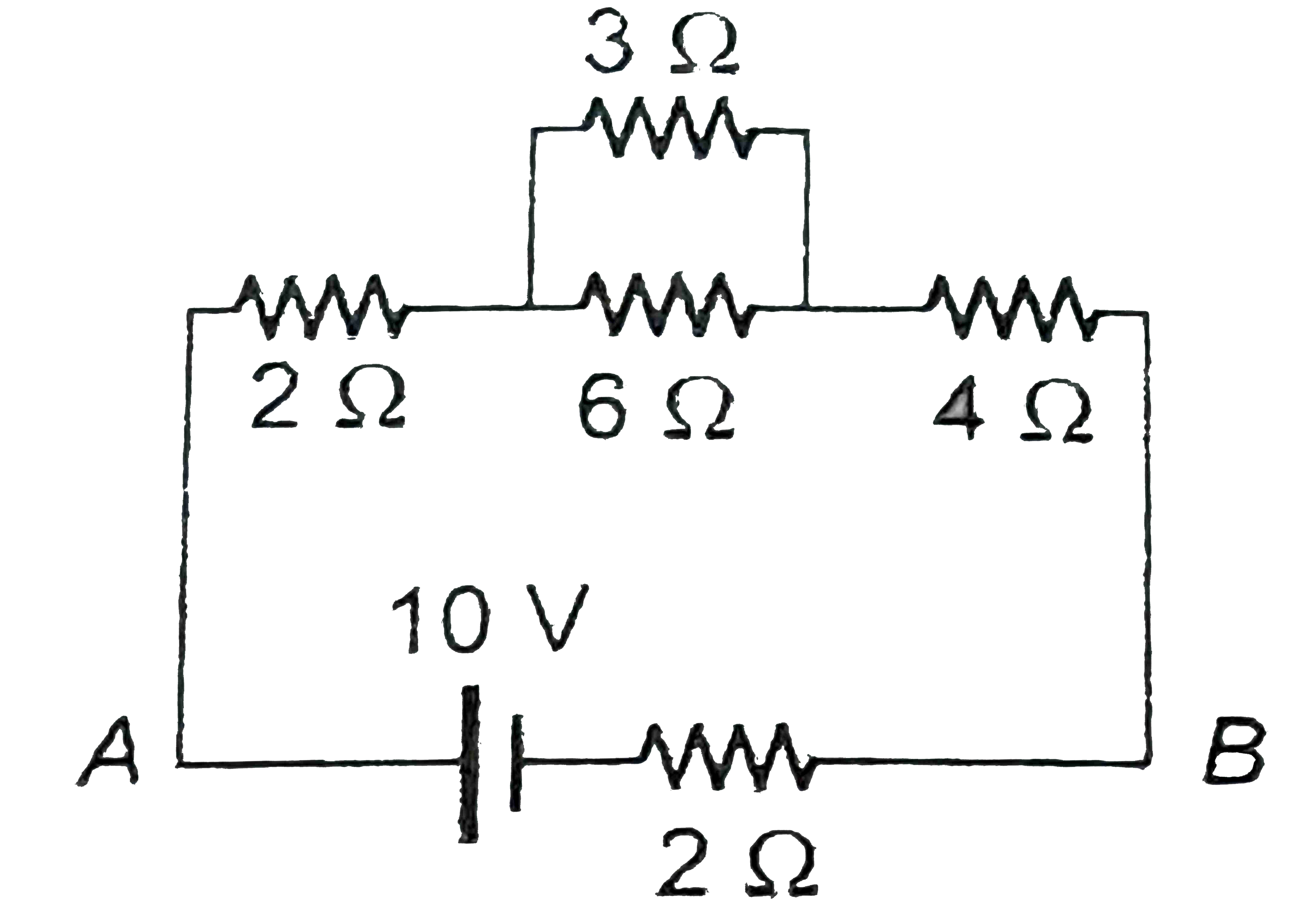
(b) Calculate the current flowing in the circuit and the potential difference across terminals of each cell.
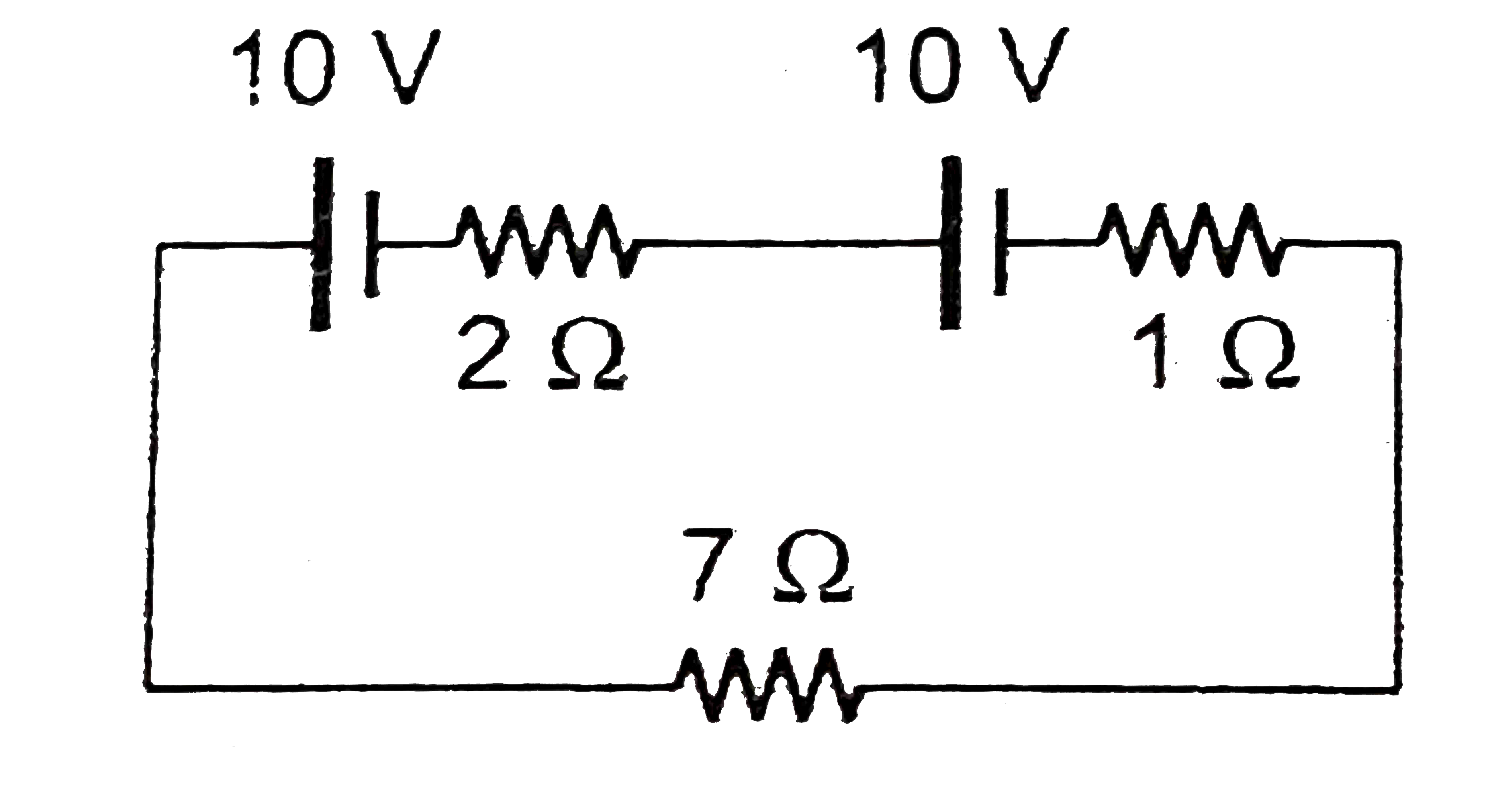
( c) Calculate the potential difference across terminals of each cell.
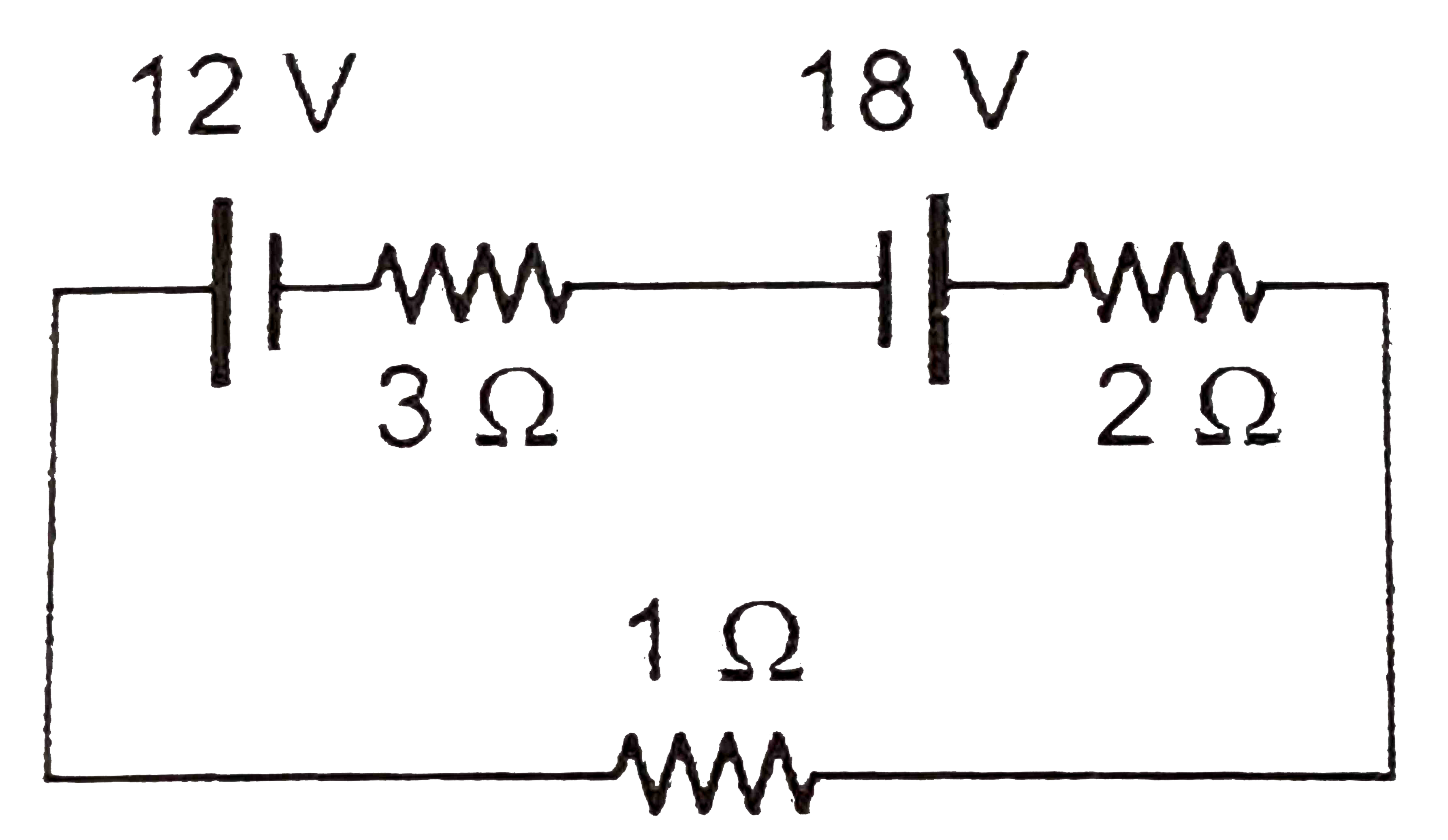
(d) Calculate the potential difference between A and B
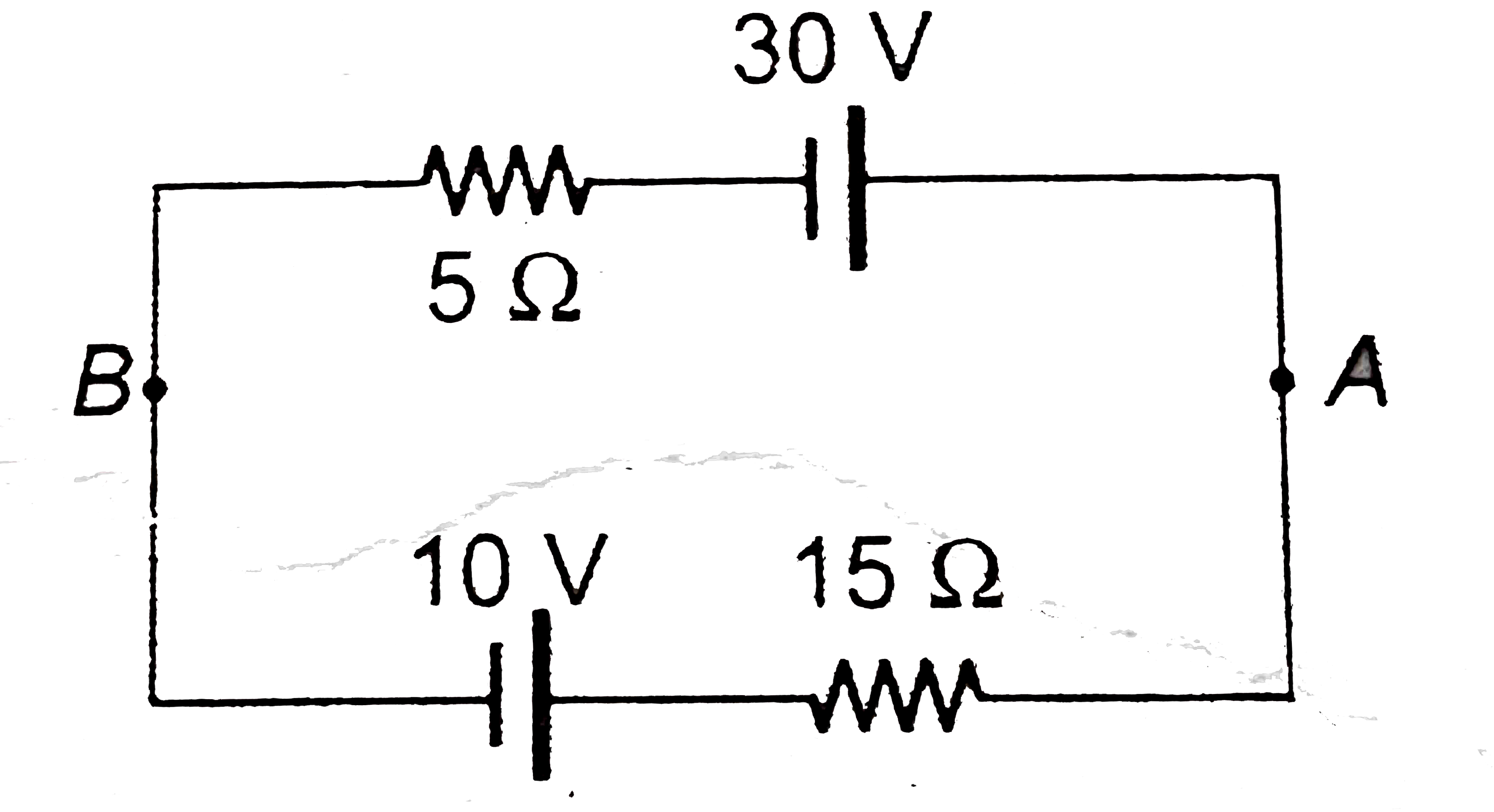
( e) Calculate the current in each resistor and terminal potential difference across each cell.

(f) Calculate potential difference across each cell.

(g) A battery of 6 cells each of emf 2V and internal resistance 0.5Ω is being changed by DC mains of emf 220V by using an external resistance of 10Ω. Calculate.
(i) the charging current
(ii) the potential difference across the battery.
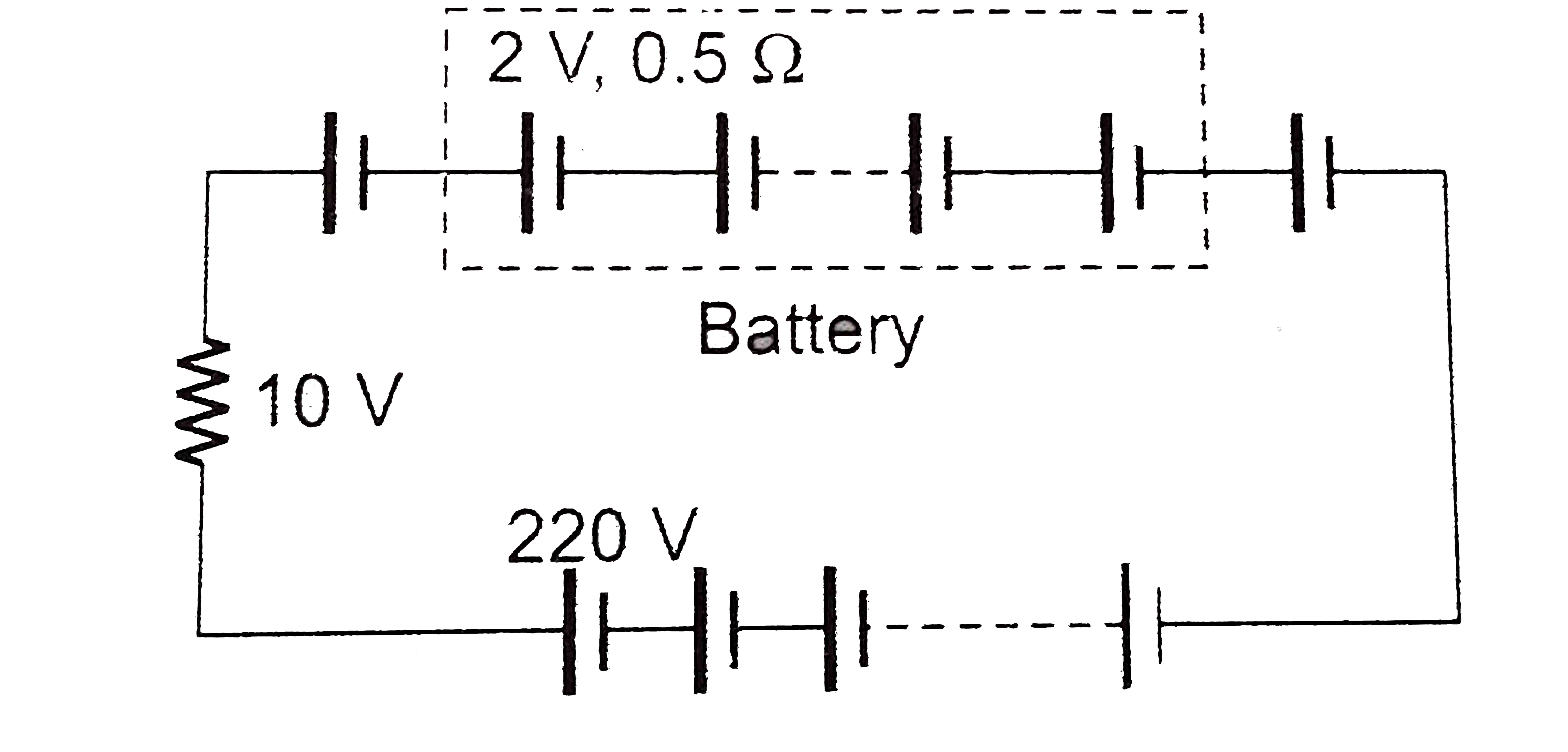 .
.
View SolutionAn alternating source drives a series RLC circuit with an emf amplitude of 6.00 V, at a phase angle of +30.0∘. When the potential difference across the capacitor reaches its maximum positive value of +5.00 V, what is the potential difference across the inductor (sign included)?
View Solution